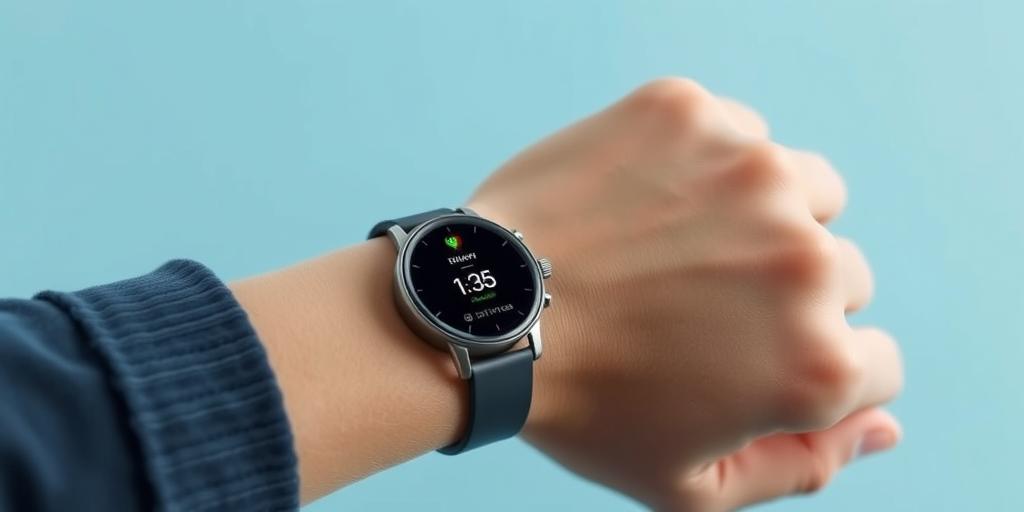Want to unlock the secrets to a healthier you? It’s time to ditch the guesswork and embrace the power of data-driven insights! Smartwatches aren’t just stylish accessories; they’re your personal health detectives, quietly tracking your vitals and offering valuable information about your overall well-being. This comprehensive guide reveals exactly how these amazing devices track your health metrics, helping you understand the numbers and make informed decisions about your health journey. Get ready to be amazed by the technology at your wrist!
Understanding the Metrics: What Your Smartwatch Tracks
Smartwatches are becoming increasingly sophisticated, offering a wide array of health metrics tracking capabilities. Beyond simply telling time, these devices use a combination of sensors and algorithms to monitor your heart rate, sleep patterns, activity levels, and even blood oxygen saturation (SpO2). But how do they do it, and what do these numbers actually mean?
Heart Rate Monitoring: The Heart of the Matter
Most smartwatches use optical heart rate sensors that employ LEDs and photodiodes to measure blood flow. As your heart beats, blood volume changes, affecting the amount of light absorbed. These sensors detect these subtle changes, translating them into a heart rate reading. This continuous monitoring is crucial for identifying irregularities, monitoring workout intensity, and even detecting potential health issues such as atrial fibrillation.
Sleep Tracking: Unlocking the Secrets of Rest
Sleep tracking is another key feature, revealing valuable information about the quality and quantity of your sleep. These devices typically use a combination of accelerometers and heart rate sensors to detect movement and heart rate changes, identifying different sleep stages (light, deep, REM) and calculating your total sleep time. Analyzing your sleep patterns helps you make adjustments to your lifestyle and improve your sleep hygiene, leading to better overall health and increased energy levels. Long-tail keywords such as “best smartwatch for sleep tracking” or “how to improve sleep quality using a smartwatch” may be useful for SEO.
Activity Tracking: Counting Your Steps and More
Beyond just step counting, many smartwatches offer comprehensive activity tracking, including distance traveled, calories burned, and even specific workout tracking. This information can motivate you to increase your daily activity levels and reach your fitness goals. Some even monitor specific workout metrics like pace, cadence, and elevation for running and cycling. The data collected helps you better understand your workout performance and make necessary adjustments to your training program.
Beyond the Basics: Advanced Health Tracking Capabilities
While the metrics mentioned above are standard, many smartwatches are venturing into more advanced health tracking. Some devices offer features such as stress level monitoring, blood oxygen saturation (SpO2) tracking, and even ECG (electrocardiogram) readings, allowing you to monitor your heart’s electrical activity. These additional features are constantly evolving, and new technologies are emerging, creating a truly exciting landscape in personal health monitoring.
Stress Level Monitoring: Managing Daily Challenges
Many smartwatches offer a stress level monitoring feature, using heart rate variability (HRV) to assess your stress levels. HRV is the variation in time between your heartbeats, and changes in HRV are related to stress levels. This information allows you to understand your stress patterns and develop strategies to manage stress levels effectively. Mindfulness and relaxation techniques can be incorporated into your routine to improve your overall well-being.
Blood Oxygen Saturation (SpO2): Checking Oxygen Levels
Some smartwatches are equipped with SpO2 sensors, allowing them to measure the percentage of oxygen in your blood. While SpO2 levels are typically within a normal range, consistently low readings may be an indicator of potential health issues, prompting a consultation with a medical professional. This metric is crucial for individuals with respiratory conditions or other health concerns.
ECG (Electrocardiogram): Monitoring Heart Rhythm
ECG capabilities in smartwatches are becoming more prevalent, allowing users to take electrocardiograms directly from their wrist. This data can help detect irregular heart rhythms, potentially identifying conditions such as atrial fibrillation. It’s crucial to understand that this is not a replacement for a doctor’s visit, but it can provide valuable information for prompt medical attention if needed. Think about including long-tail keywords like “how accurate is smartwatch ECG” or “best smartwatch with ECG for seniors” in your content to enhance SEO.
Making Sense of the Data: Utilizing Your Smartwatch Information
The data collected by your smartwatch is only valuable if you utilize it effectively. Most smartwatches offer accompanying apps that visually represent your data, making it easier to understand trends and patterns. The key is to consistently monitor your data and identify areas where changes may be necessary. Working with a healthcare professional is recommended to interpret the data accurately and receive personalized advice.
Making changes to your lifestyle based on the information your smartwatch provides can result in significantly improved health. Combining the data with healthy habits will lead you on the path to a better, healthier you. Remember, these devices are powerful tools for self-monitoring but should not replace professional medical advice. Always consult with a healthcare professional for any health concerns.
Take control of your health today! Explore the wide range of smartwatches available and start your journey toward a healthier, happier you. With the data at your fingertips, the possibilities are endless!




